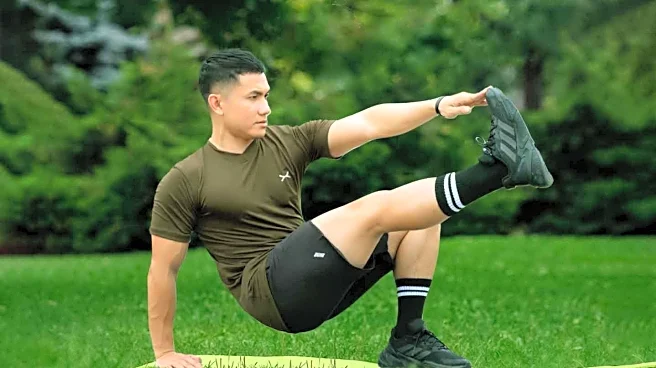What's Happening?
Circuit training, first documented in 1953 by scientists R.E. Morgan and G.T. Anderson from the University of Leeds, involves a sequence of exercises performed with minimal rest. Historically used by the military
and in European gymnastic classes, circuit training has evolved to include various exercises such as burpees, jumping jacks, and mountain climbers. It aims to improve aerobic conditioning and strength, making it a versatile workout option for athletes and fitness enthusiasts.
Why It's Important?
Circuit training's adaptability allows it to cater to different fitness goals, from cardiovascular improvement to muscle strength enhancement. Its ability to incorporate both cardio and strength components makes it effective for overall fitness improvement. The historical use of circuit training in military and gymnastic settings underscores its efficacy in building endurance and strength, contributing to its continued popularity in modern fitness regimes.
What's Next?
As circuit training continues to gain popularity, fitness professionals may develop new variations and techniques to keep workouts engaging and effective. The integration of technology, such as fitness apps and wearable devices, could enhance circuit training experiences by providing real-time feedback and personalized workout plans.
Beyond the Headlines
The historical significance of circuit training highlights its enduring appeal and effectiveness. Its ability to adapt to various fitness levels and goals makes it a valuable tool for personal trainers and fitness enthusiasts alike. As fitness trends evolve, circuit training's foundational principles may inspire new workout methodologies and innovations.











